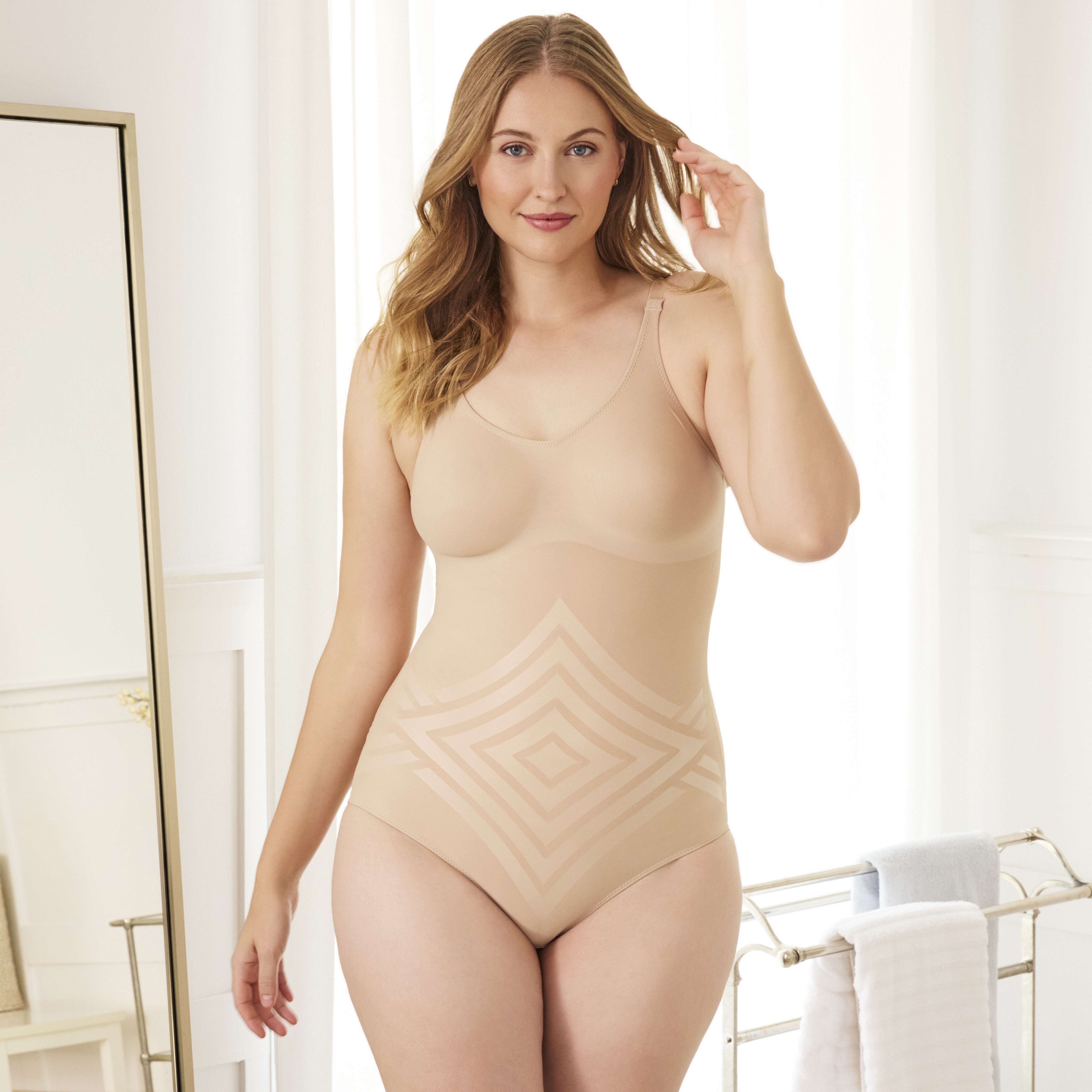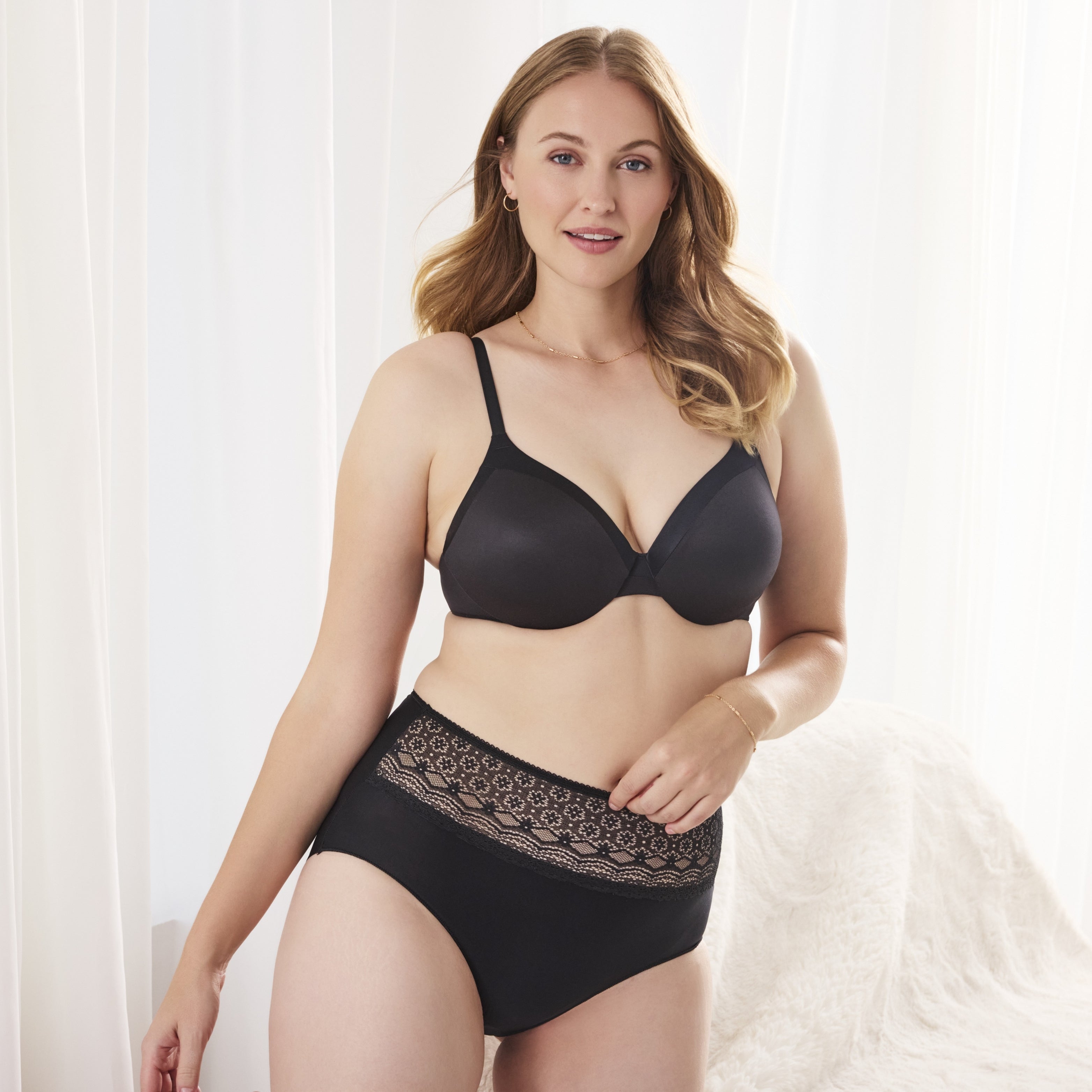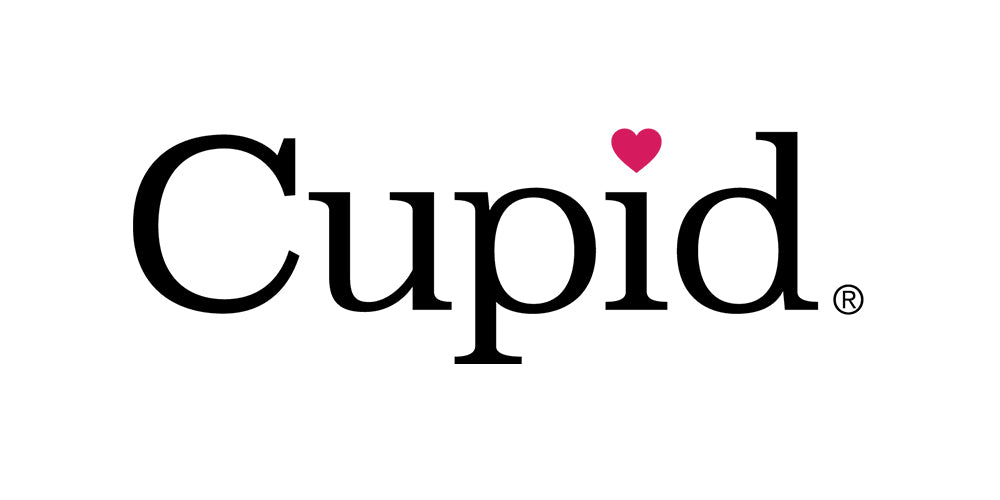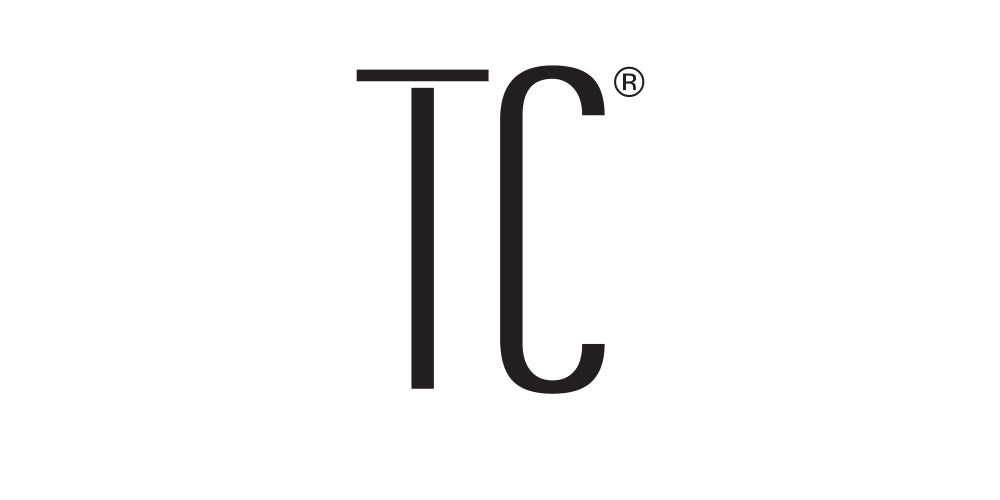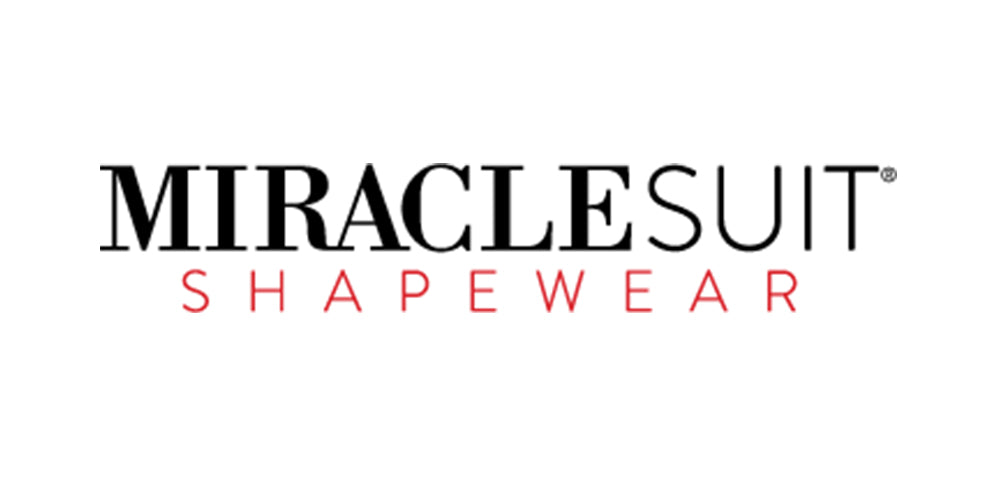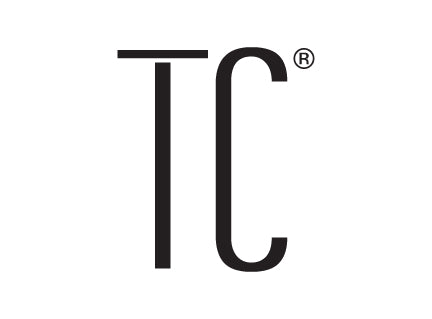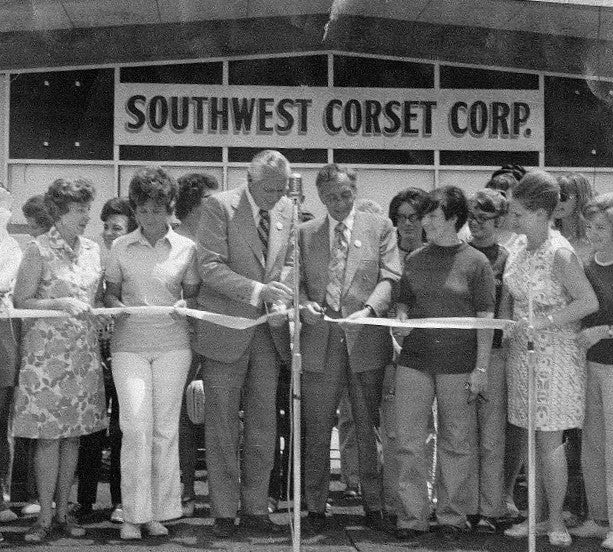About Us
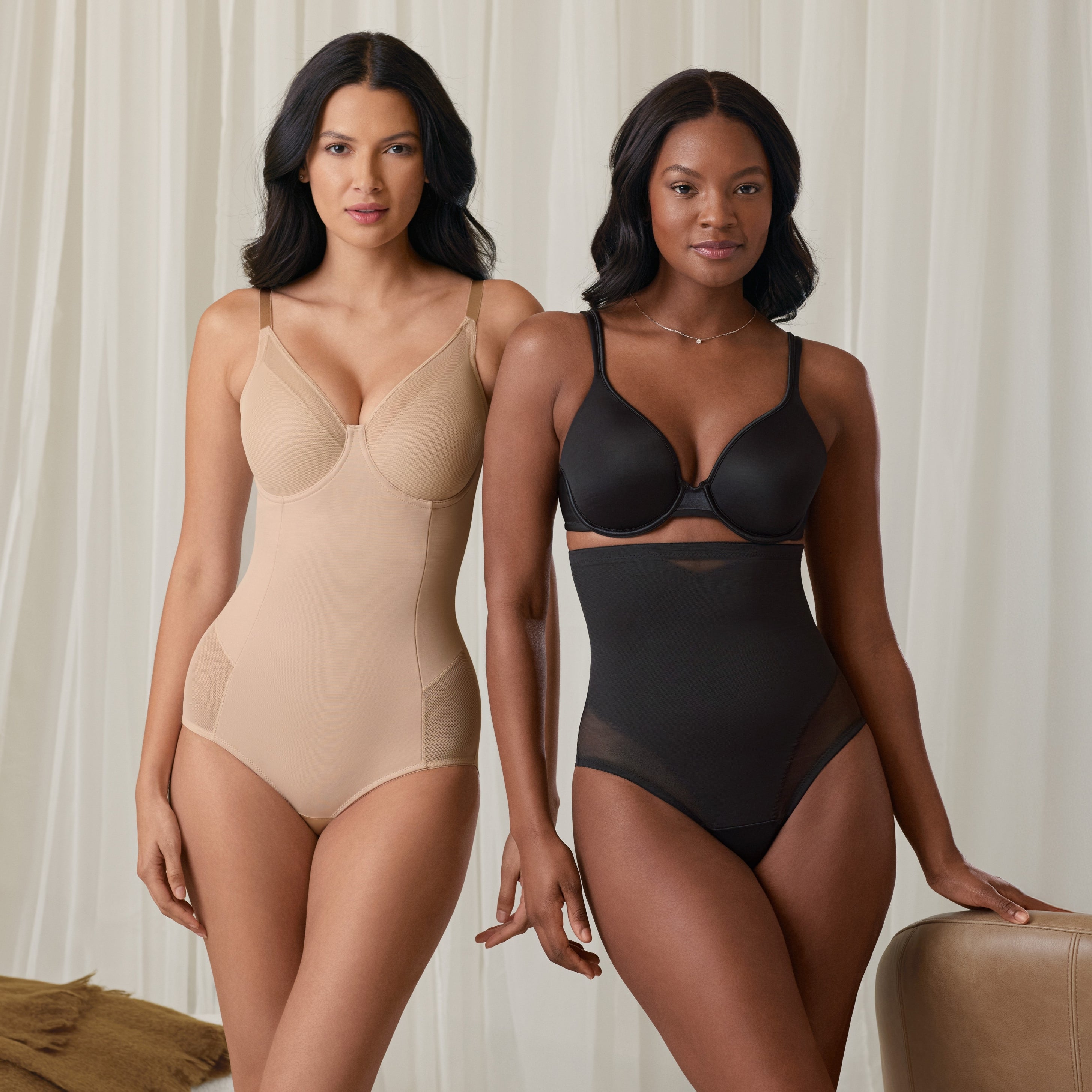
Who We Are
Cupid Intimates is the leading manufacturer of intimate apparel. Cupid Intimates' shapewear, panty, and bra products are meticulously designed with revolutionary features that help you look and feel your best.
Sustainability
Our commitment to improve our carbon footprint has been a focus since we began this journey more than a decade ago. Learn more about Cupid Intimates' focus on our impact to the environment.
Giving Back to Our Communities
At Cupid Intimates, we value the communities that host our facilities and serve as hometowns for many of our employees. We believe we have the responsibility to do what we can to be a good corporate citizen and give back to the local areas that have supported our operations over many years.
Taking Pride in Our Workplace
Here at Cupid Intimates, creating a safe, secure, and efficient workplace is of prime importance, and is a vital component in all of our short-term and long-term planning and operations.
1940s-1960s
1942
- Cupid Foundations begins operations as a sole proprietorship.
- World War II causes shortages of all sorts of materials, and quotas are created to ration what’s available to the private sector. When a company called Security Mills, a maker of knit fabrics, can’t use its entire nylon yarn quota, Cupid is founded to take advantage of it. It purchases the yarn, arranges for it to be knitted into fabric tubes by a contractor, and adds garters to the tubes. Ironically, a company that today is a leading manufacturer of seamed intimate apparel begins its life as a seller of seamless girdles.
1942-1950
- Most of Cupid’s products are sold to stores in the northeastern United States; some are sold to stores in the country’s Midwest region.
1942-1957
- Cupid’s office, showroom, factory, and warehouse facilities are all located in Manhattan in New York City.
1942-1962
- Cupid Foundations sells all of its garments under the Cupid® brand name.
- Cupid sells its girdles to small lingerie shops and the "budget stores" of larger department stores.
1945
- Cupid is incorporated in the State of New York and legally becomes Cupid Foundations, Inc.
1947
- Cupid begins both manufacturing and selling its own girdles.
- Cupid’s corporate offices, showroom, factory, and warehouse move to 16 West 32nd Street, Manhattan, New York City, New York.
1947-1962
- Cupid uses outside, freelance designers to design its garments.
1950
- Cupid’s New York City factory is unionized by the International Ladies 'Garment Workers' Union (ILGWU).
1957
- Cupid’s corporate offices and showroom move to a new location at 180 Madison Avenue, Manhattan, New York City, New York.
1957-1959
- Cupid contracts with Charish Corporation to manufacture some of its girdles to help supplement its own production and meet its sales demand.
1960
- Seamless girdles are phased out of Cupid’s production by now because they don’t function as well as seamed girdles. From this point forward, Cupid manufactures only seamed girdles.
1962-1968
- Cupid employs part-time designers in its factories to design its garments.
1963
- Cupid begins making pantliners.
- Cupid moves its factory and warehouse from New York City to 37 South 7th Street, Allentown, Pennsylvania. Charish Corporation had gone out of business and left a pool of experienced girdle makers for Cupid to hire.
- Allentown Corset Corporation is created, and incorporated in the Commonwealth of Pennsylvania, to operate it.
1964
- Cupid’s girdle sales become large enough to necessitate the addition of another factory. A second factory is opened in Bethlehem, Pennsylvania.
1967
- Pantyhose replace stockings as the principal type of hosiery worn by women. This change has a substantial effect on the girdle industry. Women no longer have to wear girdles or garter belts to hold up their stockings.
1967-1969
- Cupid begins making bras. Initially, they’re sold to department-store "budget stores." Cupid continues to focus most of its efforts on manufacturing girdles.
- Pant suits become a significant fashion item for women. Seeing this trend, Cupid creates new pantliners. This silhouette helps drive Cupid’s girdle business strongly ahead.
1970s-1990s
1970
- Girdle-industry sales fall to about 40% of their 1966 level. By this year, many intimate apparel manufacturers drop girdles from their lines. Cupid does not.
1970-1979
- Cupid’s department-store "budget store" accounts expand to include Bamberger's, Lazarus, Abraham & Straus, and other nameplates of Federated Department Stores. However, "budget stores" begin to disappear from department stores.
- The term "shapewear" replaces the term "girdle" in the intimate apparel industry.
- Cupid’s shapewear business grows significantly.
1972
- With labor availability in eastern Pennsylvania becoming insufficient to handle its growing production needs, Cupid looks to other parts of the United States for a place to open a new factory. Blackwell, Oklahoma is chosen as the location, and the new factory/warehouse is located on Main Street.
- Southwest Corset Corporation is created, and incorporated in the State of Oklahoma to operate it.
1973
- Cupid creates a cuff-top shapewear garment that doesn’t roll down. It’s called the Never Roll Duo Trol. Cupid receives its first patent for the innovative feature that allows this garment to work. It's Patent No 3,707,973.
1977
- Growing sales requires Cupid to resume using contract manufacturers to meet a portion of its production needs. It contracts with Regal Foundations, LTD of Spanish Town, Jamaica.
- Cupid makes its first sports bra.
1978
- Cupid begins selling bras to Target.
1979
- Cupid closes its factory/warehouse in Allentown. A new warehouse is opened in a different location in Allentown.
- Cupid closes its factory in Bethlehem. Cupid sets up a design studio in the South Side neighborhood of Allentown (South Allentown). This is Cupid’s first stand-alone design studio.
1980-1989
- "Budget stores" of department stores are closed. Mass merchandisers begin flourishing, and Cupid becomes the main shapewear supplier for them. Cupid’s accounts grow to include Target, Zayre, Venture, Clover, Bradlees, Caldor, Richway, Ames, and Gold Circle.
Early 1980s-Early 1990s
- Bras account for about 25% of Cupid’s total sales.
1981
- The Blackwell factory and warehouse are moved from Main Street to a new location on 13th Street.
1982
- Cupid begins selling shapewear to Bamberger’s for sale in its regular intimate apparel department. It sells four styles under the Cupid® brand name and four styles under a new brand name – Tara®.
1983
- Southwest Corset Corporation adopts its DBA, Southwest Cupid.
- Tara® styles successfully replace Cupid® styles at Bamberger’s, and Tara® begins to be sold to other department-store chains around the country. Eventual accounts include Marshall Field's and Macy's.
- Cupid’s corporate offices and showroom are moved to a new location at 200 Madison Avenue, Manhattan, New York City, New York.
1985
- Cupid begins selling Cupid® brand garments to Walmart.
- Cupid closes its warehouse in Allentown.
- In order to meet a rising sales demand, Cupid begins having goods manufactured in Port-au-Prince, Haiti. It begins by manufacturing the goods itself. A few months later, Cupid contracts with Danfred Textiles, LTD to manufacture them.
1985-1990
- As a result of the growth of its retail partners, Walmart, Target, and a variety of other regional discount chains, Cupid experiences a lot of growth itself. At the same time, department stores around the country become heavily indebted and many go through bankruptcies. Due to this financial turmoil, Cupid decides to focus its sales efforts on non-department-store accounts.
1986
- Cupid’s agreement with its Jamaican contractor, Regal Foundations, LTD, changes to provide Cupid with greater control over the production of its garments.
1987
- The warehouse in Blackwell is moved to its current location on 29th Street.
- The design studio is moved to its current location on West Lehigh Street in Bethlehem, Pennsylvania.
1988
- Cupid ends its association with Regal Foundations, LTD. Cupid Foundations Jamaica, LTD is established to manufacture garments in Jamaica for Cupid.
1990
- Growing sales to mass merchandisers, and the poor financial health of department stores generally, combine to cause Cupid to phase out its department-store Tara® business by now.
- Cupid buys Danfred Textiles, LTD and manufactures garments in Haiti itself.
Early 1990s
- The rise in popularity of molded cups, combined with increased Asian bra manufacturing competitiveness, cause Cupid’s bra sales to decline.
1990-1999
- Cupid focuses its sales efforts on mass-merchandiser accounts. It’s the first time in its six-decade history that Cupid doesn’t sell its products to department stores.
1991
- Requiring additional production capacity, Cupid opens a factory in Grenada.
- Cupid introduces modular sewing to its factories as a more efficient way than traditional line sewing to manufacture shapewear. Teams of operators now sew entire garments in separate modules. (Traditional line sewing requires each operator to perform only one sewing operation before passing the garment to the next operator for completion of the next operation.)
1992
- In response to growing sales, Cupid opens a second American factory in Hominy, Oklahoma.
- Cupid closes its factory in Grenada.
1993
- The factory in Blackwell is moved to the same 29th Street address occupied by the warehouse.
1994
- Cupid opens a third American factory in Bristow, Oklahoma.
- Cupid closes its Haitian factory.
1995
- Cupid opens a factory in Nindiri, Masaya, Nicaragua. It’s operated by Cupid Foundations Nicaragua, SA.
1996
- Modular sewing is now used universally in all of Cupid’s production facilities.
- Cupid opens a fourth factory in Oklahoma, located in Enid.
- Cupid begins selling Cupid® brand products to Walmart Canada. This marks the first time Cupid products are sold outside of the United States.
1997
- Cupid introduces its TC Fine Shapewear® brand to the marketplace with sales to Stern’s and Younkers. It’s designed to provide Total Control and Total Comfort to the wearer. Cupid’s products are thus available via department stores for the first time since the 1980s.
- Allentown Corset Corporation is merged into Cupid Foundations, Inc.
1998
- Cupid opens a small factory in Fresnillo, Mexico. It’s operated by CU Foundations, SA.
- Cupid closes its Spanish Town, Jamaica factory.
- Cupid closes its factory in Enid, Oklahoma.
1999
- Cupid re-introduces its TC Fine Shapewear® line of premium intimate apparel to the marketplace with sales to Nordstrom.
- Cupid closes its Fresnillo, Mexico factory.
- Cupid also closes its factories in Hominy and Bristow, Oklahoma.
2000s-Today
2000
- Cupid opens a factory in Calera de Victor Rosales, Mexico. It too is operated by CU Foundations, SA.
2001
- Cupid’s corporate offices and showroom are moved once again – this time to 16 East 34th Street, Manhattan, New York City, New York.
- Cupid creates an in-house research & development team to develop new processes that can lead to innovative, new products.
2002
- Cupid introduces its Naomi & Nicole® brand of shapewear to the market and will be sold to accounts in the department-store retail channel. Its garments are designed to provide light to firm control.
2003
- The Nicaraguan production facilities are moved to a new location in Masaya, Masaya, Nicaragua. A new company, Cupid Nicaragua, SA, is formed to operate the factory.
- At the end of the year, Cupid brings its first research-and-development project, Wonderful Edge®, to market. Initially used on the legs and waists of shapewear pieces, it’s a silicone application designed to prevent garments from riding up in a way that also doesn’t create visible lines under clothes.
2004
- Cupid’s corporate offices and showroom are moved to 475 Park Avenue South, Manhattan, New York City, New York.
2005
- Cupid begins selling its products outside of North America for the first time. It sells shapewear via Patricia Eve, LTD, a distributor for the United Kingdom and Ireland.
2006
- Cupid begins selling a new brand of shapewear, called Marcé®, to Zellers of Canada.
- Cupid begins selling its products in Oceania via Seafolly Pty, Ltd (Australia) and Splash Apparel Co Ltd (New Zealand).
- Cupid opens a factory in Chalchuapa, El Salvador. A new company, Cupid El Salvador, SA, is created to operate it.
- Cupid begins selling its Naomi & Nicole® brand of shapewear to The Bay (now known as Hudson’s Bay) in Canada.
2007
- Cupid receives a US patent for its Wonderful Edge® feature. It’s US Patent No 7,228,809.
- Cupid introduces Comfortable Firm® Control merchandise to the market. Products using this level of control are first sold to Walmart and Walmart Canada.
- Cupid expands the availability of its products throughout Europe. Using distributors, products are now sold in Sweden (via Jorgen Hahne AB), Denmark (via Duzette ApS), and The Netherlands and Luxembourg (via Westervoorde Beach and Bodywear BV).
- Cupid enters the panty business for the first time. Its Naomi & Nicole® panties are made using the Wonderful Edge® feature.
- Cupid Foundations, Inc. adopts its DBA, Cupid Intimates.
- Cupid begins selling its products in Mexico for the first time. Shapewear is sold to Dorian's Tijuana, a division of Sears Roebuck de Mexico, SA, under the Cupid Fine Shapewear® brand.
2008
- Cupid continues to expand the breadth of its international sales. Using distributors, its products are now sold in Belgium (via P&S Fashion bvba), Norway (via Ace Collections AS), Greece (via Prisma S.A.), Turkey (via Cicek Ic Giyim Tur. Tic. San. Ltd. Sti.), Lebanon (via Diamony International SAL), and Israel (via A. Yuval, Ltd).
- Cupid closes its factory in El Salvador.
- Cupid begins selling panties to Sears in Mexico under the Cupid® Fine brand.
2009
- Cupid begins selling its products in Poland (via FlexiFashion and Magali).
- Cupid introduces cotton panties made with Wonderful Edge®.
- Cupid introduces shapewear incorporating Wonderful Panel® technology. These panels are bonded to the fabric, independently of any garment seaming, creating Dynamic Stretch Control®(DSC®).
- Cupid redesigns its website, Cupidintimates.com, and begins publishing In Form®, a blog about bras, panties, and shapewear.
2010
- Cupid begins selling its products in Spain (via Confecciones Ory, S.A.).
- Cupid begins selling its Naomi & Nicole®, and TC® merchandise directly to consumers via its website.
- Cupid enters the realm of online social media by establishing Twitter and Facebook pages for its Naomi & Nicole® brand.
- Cupid begins selling its Marcé® brand of panties to Soriana in Mexico.
2011
- Cupid begins selling its products in Austria, Germany, and Switzerland (via Apparel Partners Int. GmbH).
- Cupid expands its presence in online social media by establishing Twitter and Facebook pages for its Cupid®, TC® Fine Intimates shapewear brands.
- Kohl’s® begins selling Naomi & Nicole® shapewear; Kohls.com begins selling Naomi & Nicole® shapewear and panties.
2012
- CupidIntimates.com begins offering free shipping on all in-stock merchandise orders totaling $75 or more.
- Cupid begins manufacturing its Cupid® and Naomi & Nicole® merchandise at a second Nicaraguan plant. This facility, operated by Cupid Nicaragua, SA, is located in Masatepe, Masaya, Nicaragua.
- Cupid receives two additional US patents for its Wonderful Edge® feature. They’re US Patent No 8,176,864 and US Patent No 8,215,251.
- Cupid suspends production at its Masatepe, Masaya, Nicaragua facility.
- Cupid continues its expansion of its online social media presence by creating Pinterest pages for its Cupid®, Naomi & Nicole®, and TC® Fine Intimates brands.
- Cupid begins selling its Marcé® brand of shapewear to Soriana in Mexico.
- Cupid begins selling its products in Singapore (via Chalone International (S) Pte Ltd).
2013
- Cupid launches a free mobile app to provide a more efficient shopping experience to its CupidIntimates.com visitors who use smartphones or tablets.
- Cupid begins selling its products in South Africa (via Slimsuit Distributors).
2014
- Cupid continues its expansion of its online social media presence by creating an Instagram page for its TC® Fine Intimates brand.
- Cupid receives an additional US patent for its Wonderful Edge® feature, US Patent No 8,839,728.
2016
- Cupid begins selling its Cupid® Fine brand of panties in Colombia (via Tania). This marks the first time in its history that Cupid products are sold in South America.
2017
- CupidIntimates.com begins offering free shipping on all in-stock merchandise orders totaling $50 or more.
- Cupid receives an American patent for its Back Magic® feature, US Patent No. 9,648,911.
- Cupid begins selling its Cupid® brand merchandise directly to consumers via its website.
2018
- Cupid receives a Canadian patent for its Back Magic® feature, Canadian Patent No 2,939,645.
- Cupid receives an American patent for its Wonderful U® feature that makes underwire bras more comfortable and adjustable, US Patent No 9,999,262.
- Cupid receives two additional American patents for its Back Magic® feature, US Patent No 9,949,513 and US Patent No 10,136,680.
2019
- Cupid receives an additional American patent for its Wonderful U® feature, US Patent No 10,165,804.
2020
- Cupid receives an additional American patent for its Wonderful U® feature, US Patent No 10,709,175.
- Cupid begins manufacturing and selling its own face covers. It also works with a consortium of companies and the federal government to provide face covers to healthcare workers. And, it partners with a large medical supplies company to manufacture scrubs.
2021
- Cupid's corporate headquarters moves to its Oklahoma location at 318 North 29th Street, Blackwell, Oklahoma.
2023
- Cupid receives a Canadian patent for its Bra and Garment With a Bra Portion, CA Patent No 3,030,291
Get in touch
Have questions about your order, or a general enquiry?

